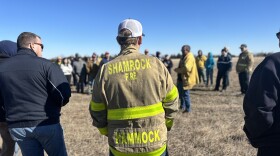Fifth graders in Oklahoma City Public Schools will be joining older peers in middle schools across the district under a proposal unveiled this week.
The fifth-through-eighth-grade middle school model isn’t very common, especially in large districts. There were just 23 in Oklahoma in 2017, and all but two were in small, rural communities.
Much more common is the sixth-through-eighth-grade model, used by 185 middle schools across the state, according to data from the Office of Educational Quality and Accountability.
The plan, announced by Superintendent Sean McDaniel on Tuesday, is part of a major restructuring of the district that will close at least 15 schools, and as many as 18. The district, the state’s largest, is promising to reinvest the savings from school closures to provide equitable resources, such as full-time music, art and PE teachers in all elementary schools and science labs at all secondary schools, and to repurpose the empty school buildings into health centers and other positive assets for the community.
The board is expected to vote on a final plan in March, with changes going into effect for the 2019-20 school year.
Currently, Oklahoma City uses a hodgepodge of middle school and junior high models that are inconsistent.
“It’s a big change to move the fifth-graders up, but the plan the administration has sounds solid,” said school board member Carrie Jacobs. “Having healthy, robust middle school programs is better than our mid-high models. As a parent, I’d rather have a fifth-grader in middle school than a sixth-grader in high school.”
Parents have voiced concerns about younger students being exposed to adolescent behavior too soon, particularly drugs, gangs and bullying. Fifth-graders are typically 10 or 11 years old.
“If I was a fourth-grade parent and all of a sudden told next year I’m going to have a middle schooler, that would be concerning,” said Courtney Powell, whose son Jack is in sixth grade at Belle Isle Enterprise Middle School. “It’s a maturity issue. It’s just not there for all the kids in fifth grade.”
Why Middle School?
Oklahoma City built its first junior high schools in the 1920s, according to the Oklahoma History Center, as the idea was gaining popularity nationwide. Until then, nearly all school systems had an eight-year primary school and four-year secondary school.
Junior high schools typically began in seventh grade and were designed as a transition from a more sheltered elementary school to more demanding high schools. By the 2000s, three quarters of U.S. middle schools included sixth grade.
Some districts, like in Wynnewood, added fifth grade to its middle school out of necessity — they needed more space in the elementary school.
“It wasn’t necessarily a decision that was made (based on) what’s the best fit. It was: Who will fit where?” said Wynnewood Middle School Principal Kevin Lynch.
To accommodate the big developmental differences between students, the school has one wing for fifth- and sixth-graders, and another wing for seventh- and eighth-graders.
“Those two halls have a very distinct personality and culture,” Lynch said. “I’m not going to say it’s the best configuration, but we certainly can make it work.”
The only fifth-through-eighth middle schools in large urban areas are the KIPP charter schools in Oklahoma City and Tulsa. KIPP is a national brand of college prep charter schools, in which starting middle school in fifth grade is common.
The adjustment to middle school is hard and it can take some kids a year to adjust, said Tracy McDaniel, executive director of KIPP OKC.
“We get that out of the way in fifth grade, and that’s one reason we can catch kids up quicker, because we have them for four years in middle school,” he said.
Both of these schools are smaller than what Oklahoma City is proposing. Wynnewood Middle School has just over 200 students in the entire building. KIPP Reach has 300. (The school currently shares a building with FD Moon Elementary but will be relocated under the Oklahoma City proposal.) Oklahoma City says its middle schools will have 650 to 1,000 students each after the reconfiguration.
What the Research Says
Research shows that transitioning to middle school is extremely difficult for students who are already undergoing social, emotional and physical changes. Some studies suggest students perform better academically in K-8 schools than middle schools.
For instance, in a 2008 study of North Carolina students, researchers found sixth-grade students in middle school were twice as likely to be disciplined for behavior problems as sixth-grade students who attended a K-8 school. They attributed the behavior issues to the influence of older peers.
Another study of New York students found students’ academic achievement fell in math and English in middle school, compared to students in K-8 schools. But a recent studyseems to dispute the notion that K-8 is a better model, finding that students who attended standalone middle schools had better reading scores than those who attended K-8 schools.
Evidence is scant regarding the benefits of earlier middle school enrollment.

In his presentation Tuesday night, McDaniel said the advisory teams working on the plan reviewed research supporting a fifth-through-eighth-grade middle school model. But Oklahoma Watch asked for specifics and the district has not yet provided them.
April Tibbles, a spokeswoman for the Association for Middle Level Education, said middle schools across the country use a variety of grade combinations, and these bands don’t matter as much as what’s going on inside classrooms.
“Students in grade five can be in any school configuration, but having a teacher who understands their developmental, social-emotional and academic needs is paramount,” she said.








